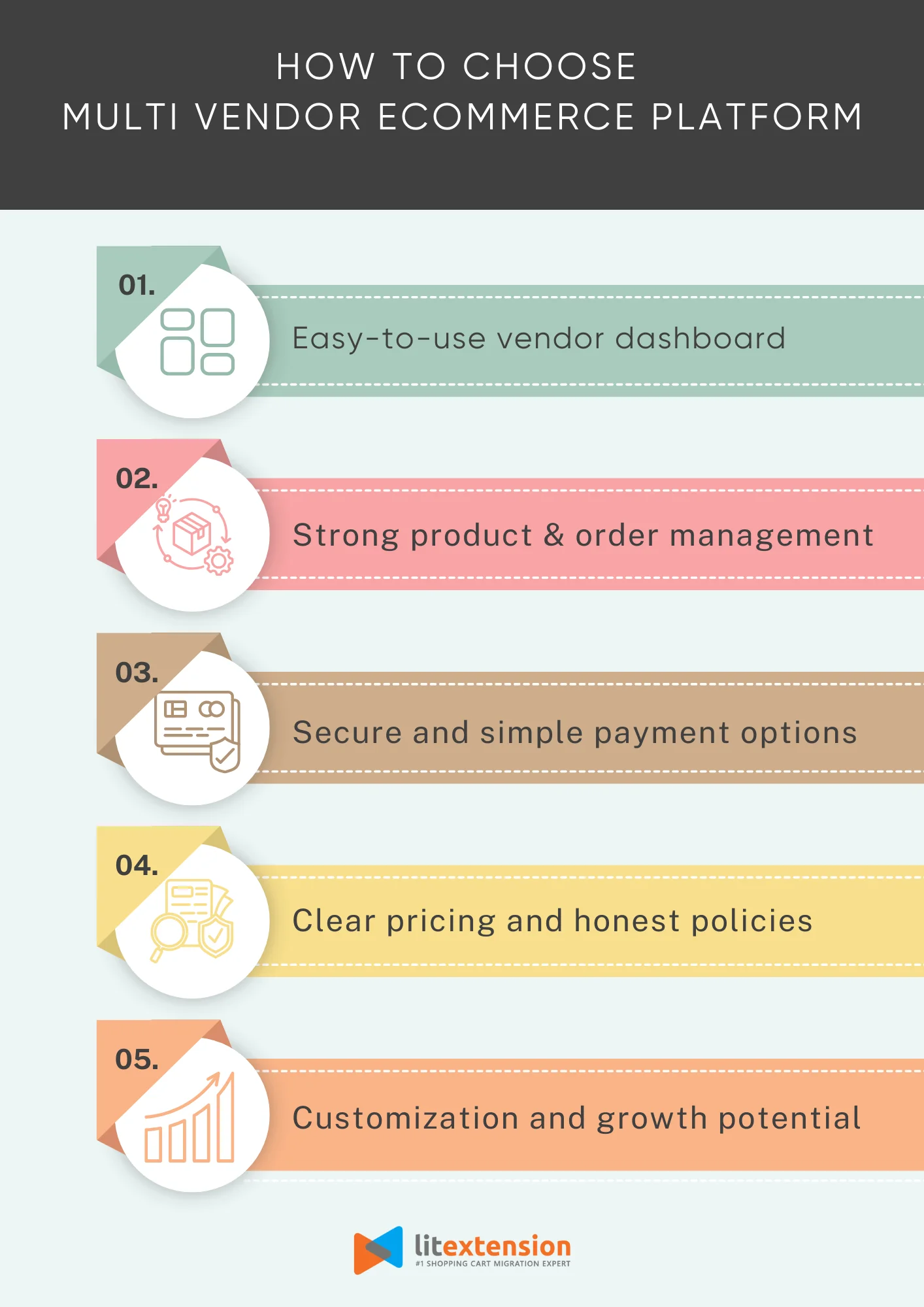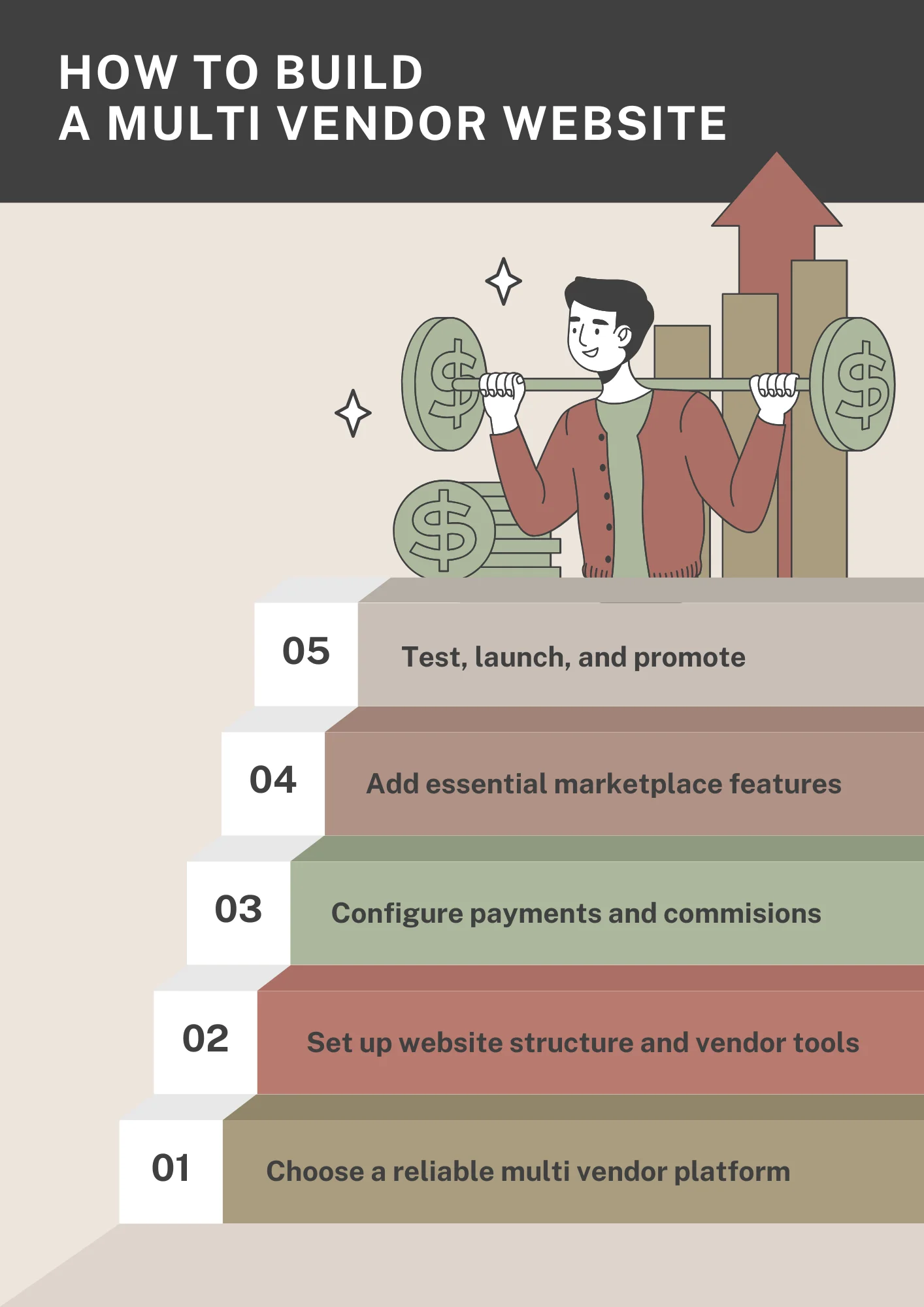When we think about starting an online marketplace, choosing the right multi vendor eCommerce platform is one of the most important steps since it's the backbone of your whole business operation. The ideal solution can help you save time, reduce costs, and scale faster.
From our experience, the best multi vendor eCommerce platform includes:
- #1. Shopify
- #2. WooComemrce
- #3. Adobe Commerce
- #4. BigCommerce
- #5. CS-Cart
In this guide, we'll walk you through the key features that each platform offers, so stay tuned!
6 Best Multi Vendor eCommerce Platform for Your Business
In this section, we have put together a list of the six best multi vendor eCommerce platforms, each with its own strengths and features. Whether you're a startup, a growing brand, or a developer building for clients, this guide will help you find the perfect fit for your marketplace.
Platform | Best for | Pros | Cons |
Shopify | Small to medium marketplaces that want a fast, low-code launch | - Easy setup and management - Hosted with strong performance - Great app support for vendor tools | - Requires third-party apps for multi vendor - Limited back-end customization. - No control over hosting |
WooCommerce | Sellers comfortable with WordPress who want full control and flexibility | - Open-source and highly customizable - Large plugin ecosystem - Full control over pricing and hosting | - Requires ongoing maintenance - Technical knowledge needed - May require developer support |
Adobe Commerce | Enterprise businesses or high-growth ventures needing custom workflow | - Extremely flexible and powerful - Enterprise-grade performance - Scalable for large product/vendor volumes | - High development and maintenance costs - Requires advanced technical expertise - Longer setup time |
BigCommerce | Mid-sized businesses wanting performance without server management | - Built-in multi-channel selling - Is highly scalable - Fully hosted with strong uptime | - No native multi vendor support - Less plugin variety than Shopify and WooCommerce |
CS-Cart | Entrepreneurs looking for a dedicated multi vendor system out of the box | - Built specifically for marketplaces - Powerful vendor tools included - One-time license, no SaaS fees | - Hosting and security are your responsibility - Customization may need a developer |
#1. Shopify
Shopify pricing: From $79 to $2,300+ per month.
We believe Shopify is one of the easiest and most beginner-friendly platforms for launching an online store, and with the help of third-party apps, it can also be used to create a multi vendor eCommerce platform. Shopify is a fully hosted solution, which means it takes care of web hosting, security, and performance, so you can focus more on running your business and less on technical issues.

While Shopify doesn’t offer multi vendor features by default, we’ve seen many store owners successfully transform their Shopify sites into marketplaces using apps like Webkul MultiVendor Marketplace, Shopify Marketplace Kit, or Multi Seller Marketplace. These tools allow multiple vendors to register, upload products, manage orders, and track their performance through individual dashboards. As the store owner, you can set commission rules, approve new vendors, and control the overall site experience.
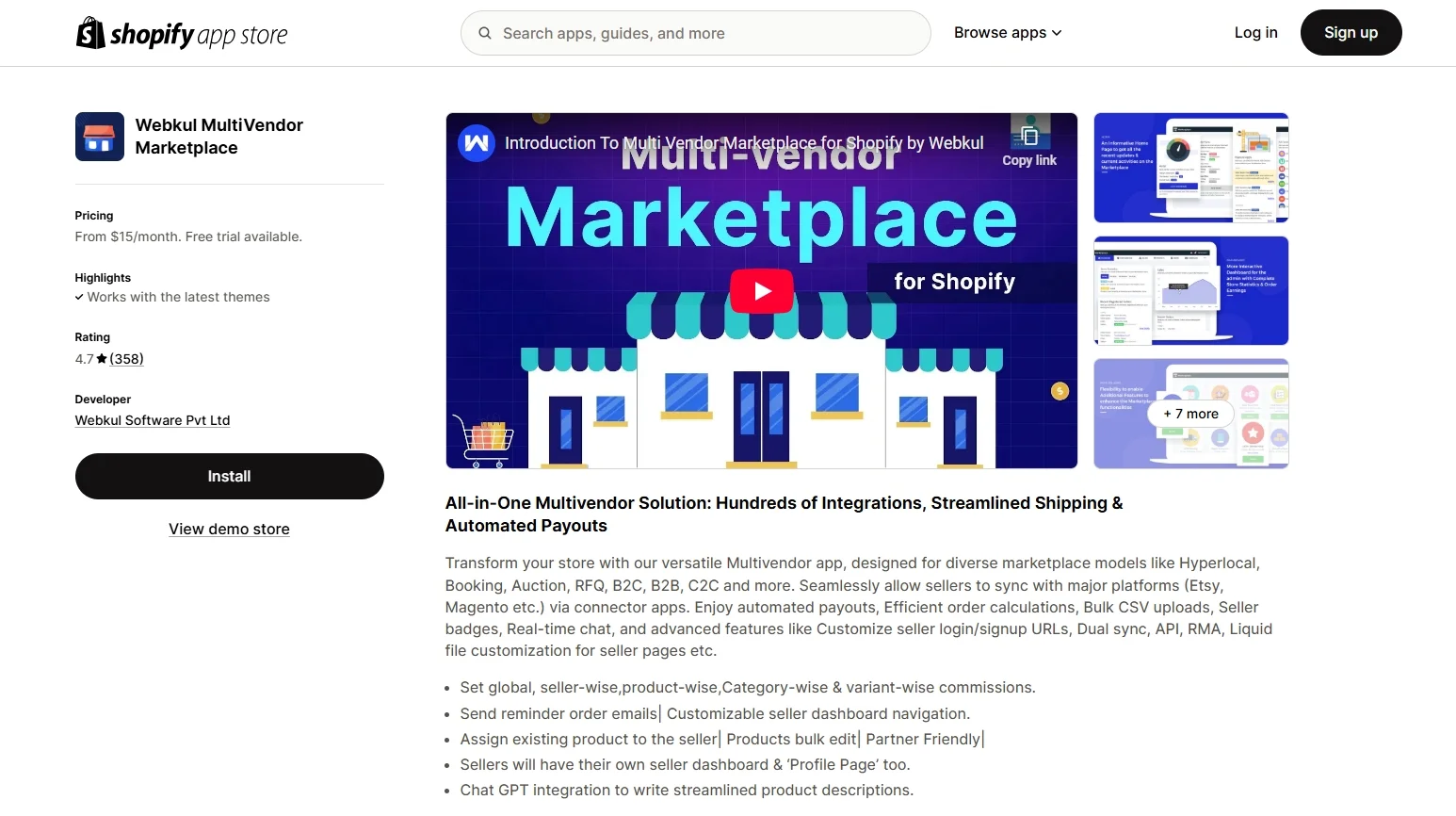
Here are the pros and cons of using Shopify for multi vendor eCommerce. But, for a more in-depth analysis of this platform, please don't forget to check out our Shopify review here:
Pros | Cons |
✓ Easy to set up and manage, even for beginners with little technical skill. ✓ Reliable hosting, security, and performance included. ✓ Large Shopify app ecosystem to support multi vendor features. ✓ User-friendly interface for both admin and other vendors. | ✗ Multi vendor functionality requires third-party apps. ✗ App-based solutions may have limited customization options. ✗ Costs can add up with monthly app fees and advanced features. ✗ Less control over back-end functionality compared to open-source. |
In our opinion, Shopify is a great option if you want a reliable, low-maintenance platform and don’t mind relying on apps to extend its functionality. It's especially useful for smaller marketplaces or businesses that want to launch quickly without getting into heavy development work. However, if you’re planning to build a highly customized or large-scale marketplace, we think you might run into some limitations in terms of flexibility and scalability.
#2. WooCommerce
Next, let's discuss another option on our list today, WooCommerce. From our point of view, we think this solution is one of the most flexible and widely used platforms for building an online store, and it becomes even more powerful when turned into a multi vendor eCommerce platform. Built as a plugin for WordPress, this platform gives you full control over your site’s design, functionality, user experience, and WooCommerce pricing. This makes it a favorite choice for entrepreneurs who want more customization and freedom.
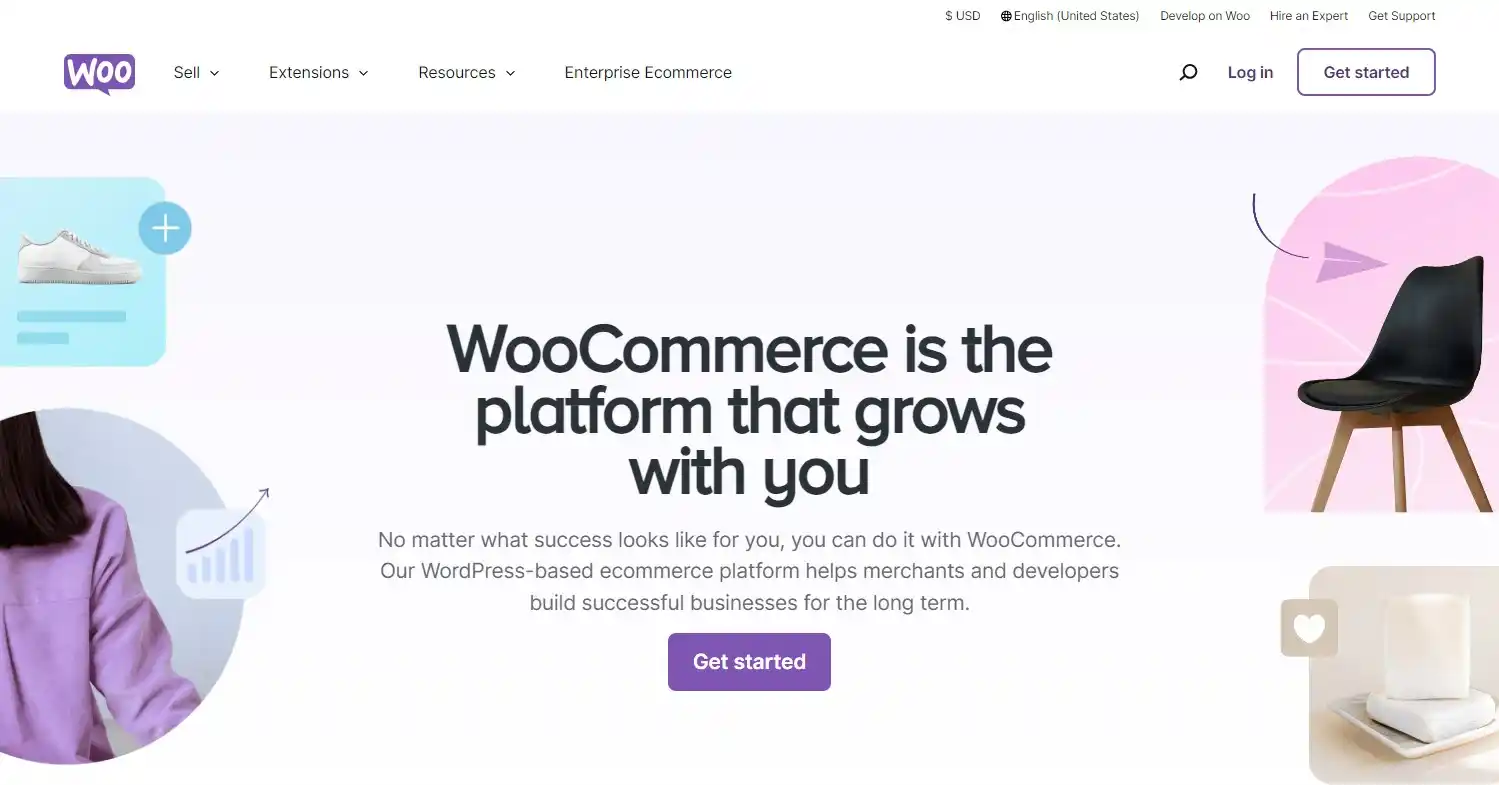
To enable multi vendor capabilities, you’ll need to install a vendor marketplace plugin such as Dokan, WCFM Marketplace, or WC Vendors. These tools allow each vendor to register their own account, manage their products, view orders, and track earnings, all from their own dashboard. As the site owner, you can manage commissions, vendor roles, and store layouts, giving you full oversight of how the marketplace runs.
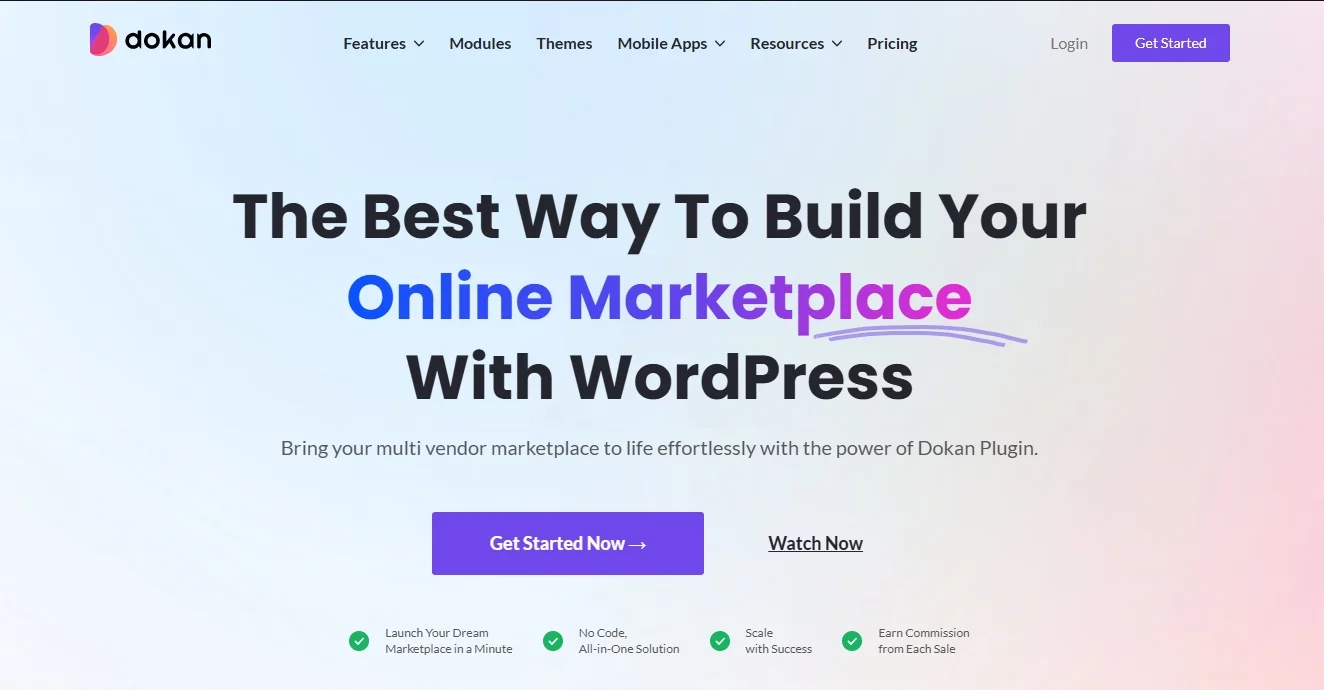
Pros and cons of using WooCommerce as your multi vendor eCommerce platform:
Pros | Cons |
✓ Highly customizable with full control over design and features. ✓ Wide range of multi vendor plugins (e.g., Dokan, WCFM, WC Vendors) ✓ Complete free to install. ✓ Full control over data and hosting. | ✗ Requires technical knowledge or developer support. ✗ Needs separate hosting and regular maintenance. ✗ Needs separate hosting and regular maintenance. ✗ Setup and scaling can be more complex than hosted platforms. |
In our opinion, WooCommerce is best for those who are comfortable working with WordPress or have access to a developer. It offers deep customization and is suitable for both small and large marketplaces. However, since WooCommerce is self-hosted, you’ll also need to manage things like hosting, security, and updates on your own.
If you want to build a feature-rich, highly tailored multi vendor store with long-term growth potential, we believe WooCommerce offers excellent value and control.
#3. Adobe Commerce (formerly Magento 2)
When it comes to building a large, feature-rich multi vendor eCommerce platform, we believe Adobe Commerce, previously known as Magento, is a top-tier choice. Unlike simpler platforms, Adobe Commerce offers enterprise-level scalability, deep customization, and full control over your site’s architecture. As a result, it’s often the preferred solution for businesses with complex needs and strong technical teams.
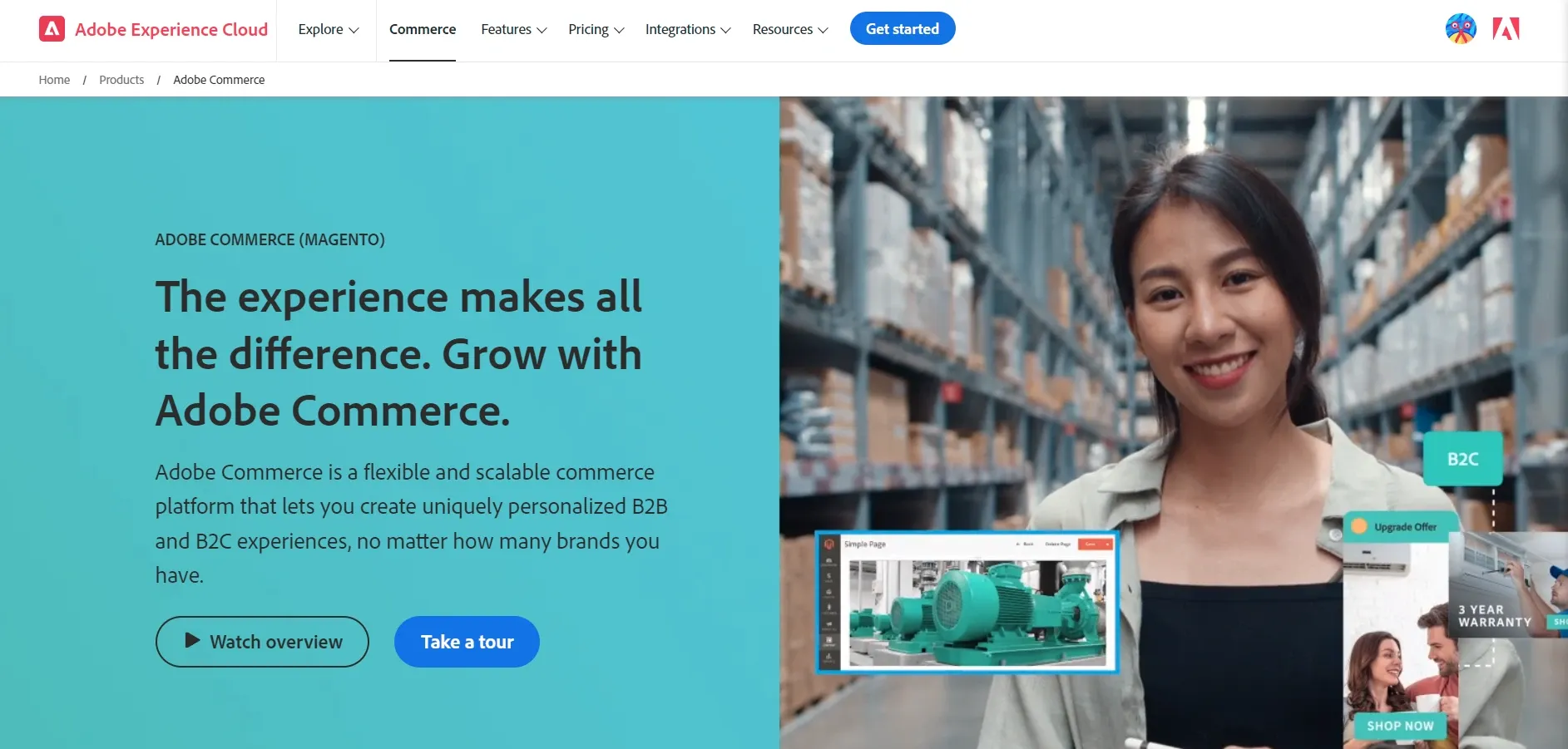
However, it's important to note that Adobe Commerce does not support multi vendor functionality out of the box. To add this capability, you’ll need to install powerful third-party extensions such as Webkul Marketplace, CedCommerce Multi Vendor, or Landofcoder Marketplace. With these tools, you can enable vendors to register, manage their products, view sales reports, and operate through independent dashboards. Moreover, as the marketplace owner, you’ll be able to set commission rules, monitor activity, and configure how vendors interact with customers.
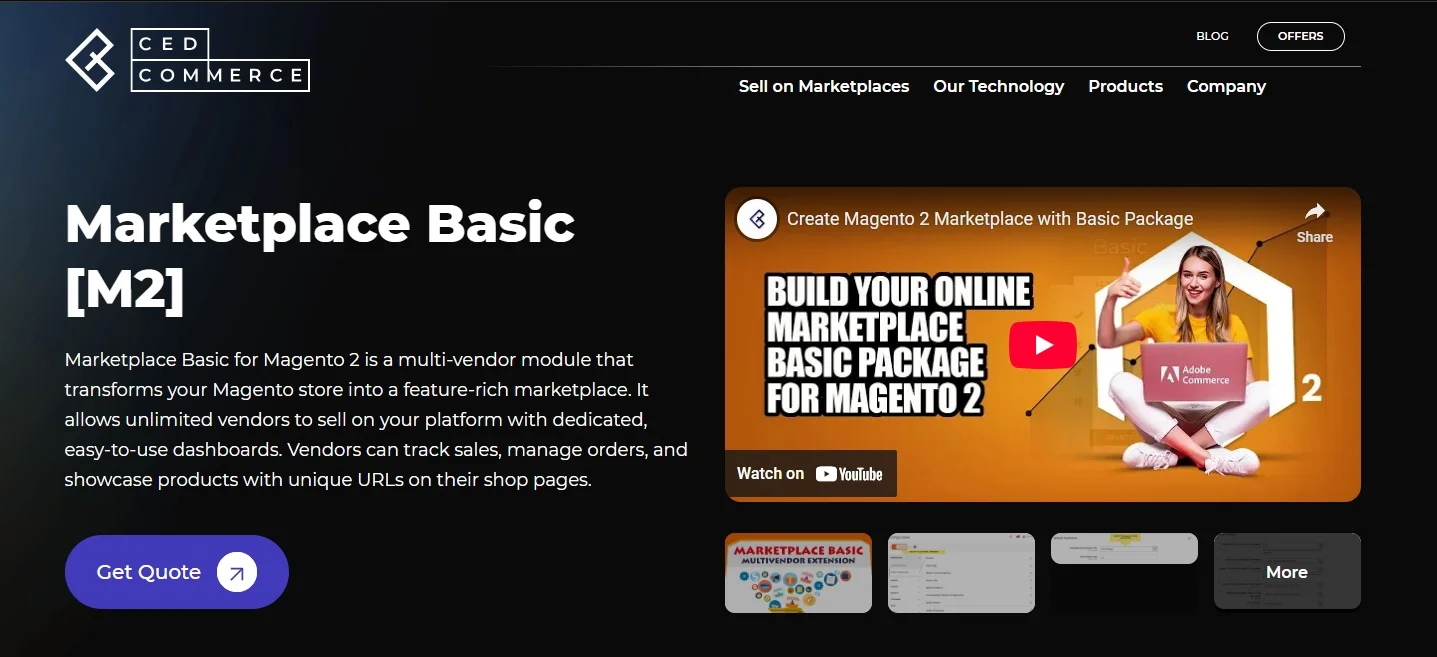
Pros and cons of using Adobe Commerce as your multi vendor eCommerce platform:
Pros | Cons |
✓ Enterprise-grade performance and unmatched flexibility. ✓ Scales well for large, complex marketplaces. ✓ Seamless integration with robust multi vendor extensions. ✓ Advanced control over vendor roles, pricing, and workflows. | ✗ High development and maintenance costs ✗ Requires experienced developers and technical infrastructure. ✗ Hosting and security must be managed separately. ✗ Steeper learning curve for new users, even with good technical skill. |
However, we must point out that Adobe Commerce demands significant resources. Unlike platforms like Shopify or WooCommerce, it requires professional developers to handle setup, customization, and ongoing updates. Additionally, you’ll need to manage your own hosting and server performance, which can add to the overall cost and complexity.
Even so, if you’re planning to build a high-volume, global marketplace with room for advanced custom features, we strongly believe Adobe Commerce is worth the investment.
Believing in the power of Adobe Commerce or Magento 2, LabX chose this solution as their trusted multi vendor eCommerce platform. Founded in 1995, LabX began with a focused mission: to serve the laboratory equipment industry through simple classified listings. Today, it stands as a premier online marketplace where scientists and researchers shop for instruments, consumables, accessories, and supplies, all in one place.

Adobe Commerce’s flexible and open-source architecture enabled LabX to build a marketplace that’s both highly functional and deeply customizable. With Magento, LabX is able to:
- Enable advanced listing workflows, including listing expiration, relisting options, and vendor-driven product updates, perfect for managing high-value scientific equipment.
- Support a custom quote system, allowing buyers to request pricing from sellers for specialized instruments or bulk purchases.
- Offer a generic quote feature, making it easier for customers to negotiate with multiple vendors before making a purchase.
- Calculate accurate taxes for both sellers and customers across regions, ensuring full compliance and transparency.
By leveraging Magento, LabX has transformed from a simple classifieds site into a dynamic, full-featured marketplace. Its robust vendor tools, quoting system, and advanced customizations allow the company to cater to the specific workflows of scientists and lab managers.
#4. BigCommerce
If you're looking for a reliable and scalable hosted platform that combines ease of use with powerful features, we believe BigCommerce is a strong contender for building a multi vendor eCommerce platform. While it doesn’t offer native multi vendor functionality, it can still be transformed into a fully functional marketplace with the help of third-party apps and custom integrations.
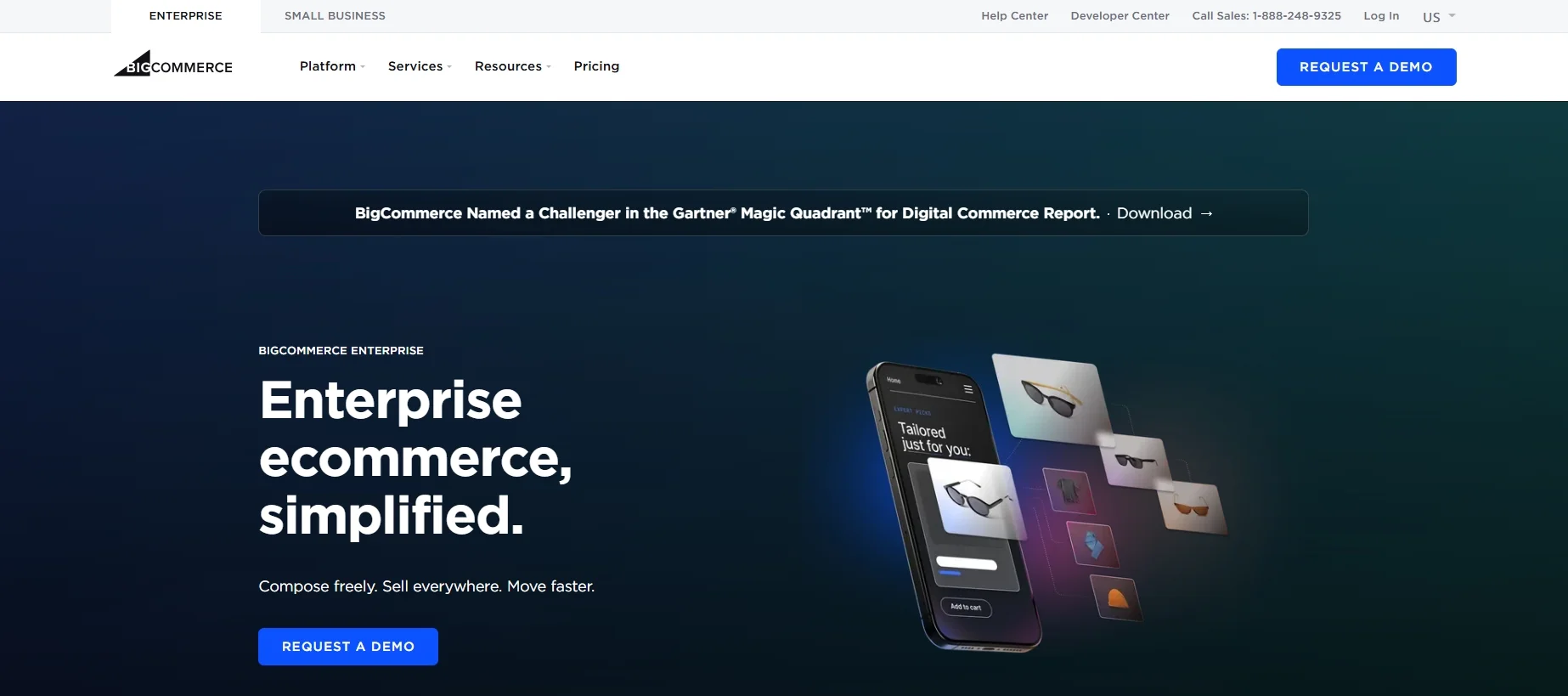
To enable multi vendor selling on BigCommerce, you’ll need to use extensions such as Multi-Vendor Marketplace by Webkul, or integrate with middleware solutions that connect BigCommerce to external marketplace engines. These tools allow vendors to register accounts, manage their products, and process orders through separate dashboards. At the same time, you can set commission structures, monitor vendor activity, and maintain control over the entire store experience.
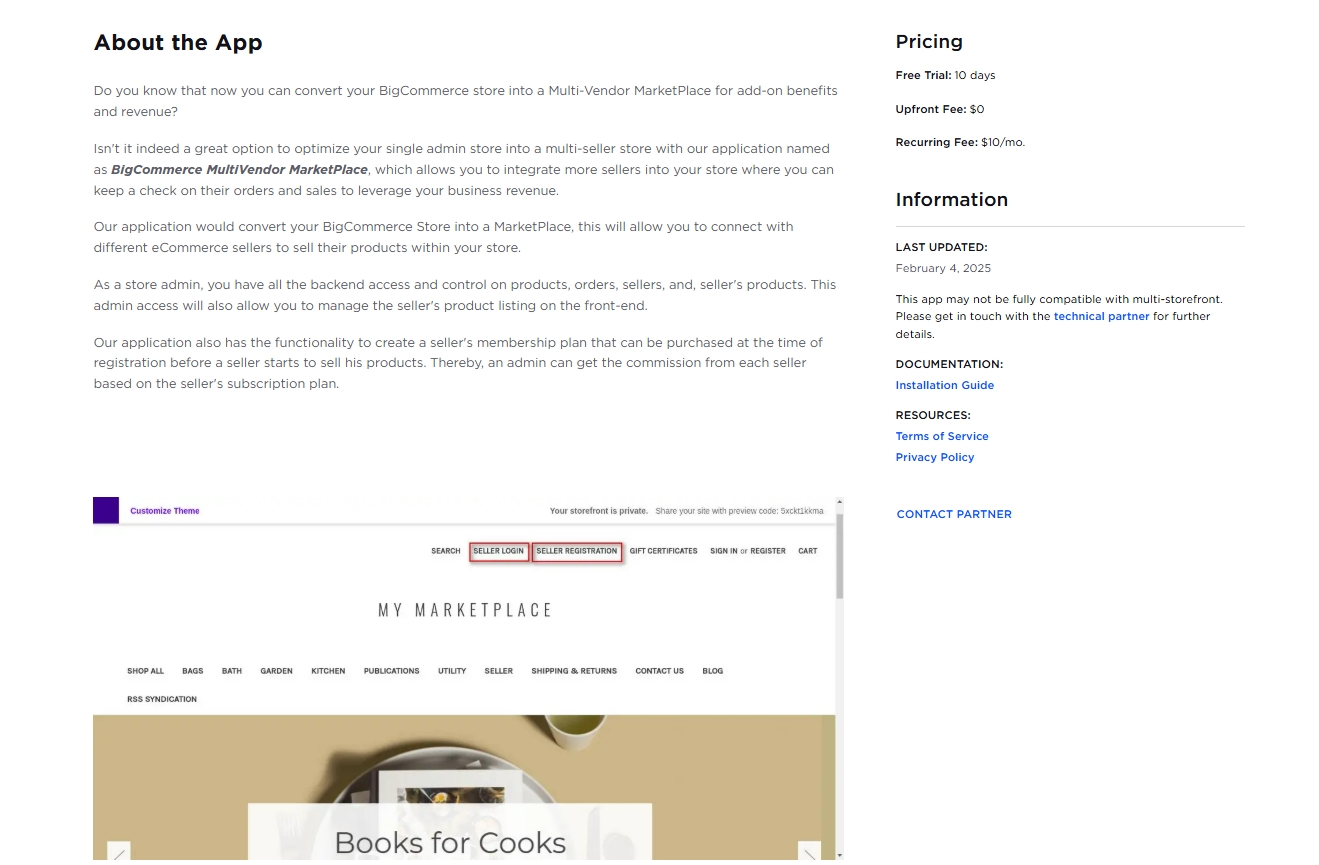
Pros and cons of using Adobe Commerce as your multi vendor eCommerce platform:
Pros | Cons |
✓ Hosted platform with strong security and performance. ✓ Easy to manage and scale without deep technical skills ✓ Good built-in SEO, marketing, and multi-channel selling tools. ✓ Supports integrations with major marketplaces (eBay, Amazon, etc.). | ✗ No built-in multi vendor features, requires third-party apps. ✗ Less flexible than open-source platforms for custom workflows. ✗ Advanced multi vendor setups may need custom development. |
That said, we believe BigCommerce is better suited for mid-sized marketplaces rather than highly complex or developer-heavy builds. Since its multi vendor capabilities depend on third-party tools, the level of flexibility may be more limited compared to open-source solutions like WooCommerce or Adobe Commerce. Still, for business owners who want a dependable and relatively low-maintenance platform, BigCommerce strikes a strong balance between performance and simplicity.
In conclusion, we recommend BigCommerce for business owners who want a powerful, secure platform with less technical complexity. With the right vendor plugin, it can support a growing marketplace while offering a smooth experience for both sellers and shoppers.
#5. CS-Cart
When it comes to all-in-one marketplace solutions, we believe CS-Cart Multi-Vendor stands out as a dedicated platform built specifically for multi vendor eCommerce. Unlike many other platforms that require plugins or third-party apps to enable vendor functionality, CS-Cart is designed from the ground up for marketplaces, making it one of the most complete and turnkey options available.
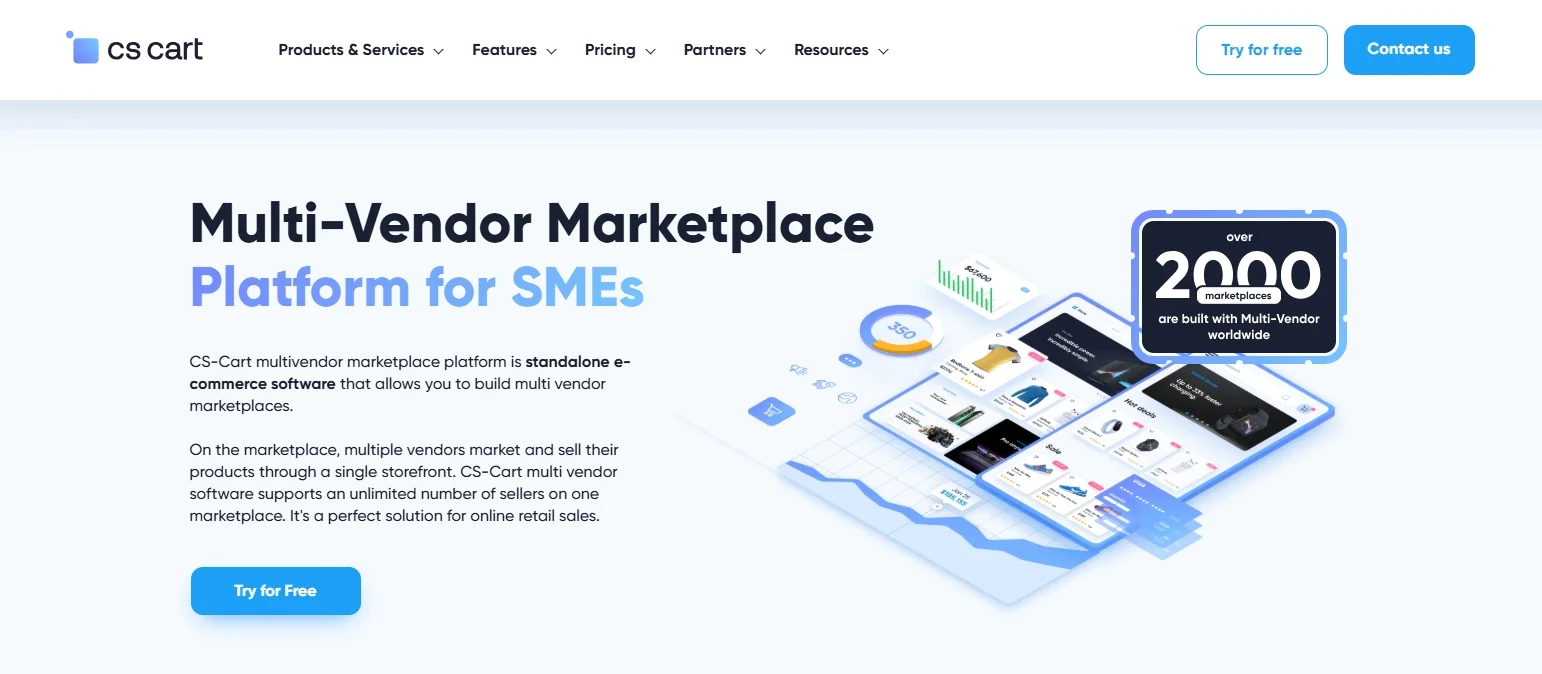
With CS-Cart, vendors can register, create their own micro-stores, manage products, fulfill orders, and view earnings—all from a user-friendly dashboard. As the marketplace owner, you have full control over vendor approvals, commission rates, product moderation, and overall store settings. We appreciate how CS-Cart makes it easy to manage a large vendor base without needing to build everything from scratch.
Another advantage we’ve seen is its strong built-in feature set. CS-Cart includes essentials like real-time shipping rates, product filters, SEO tools, marketing campaigns, and even a mobile app for vendors. It also supports digital and physical goods, making it flexible for various business models. Additionally, you can customize the platform to match your branding and marketplace rules.
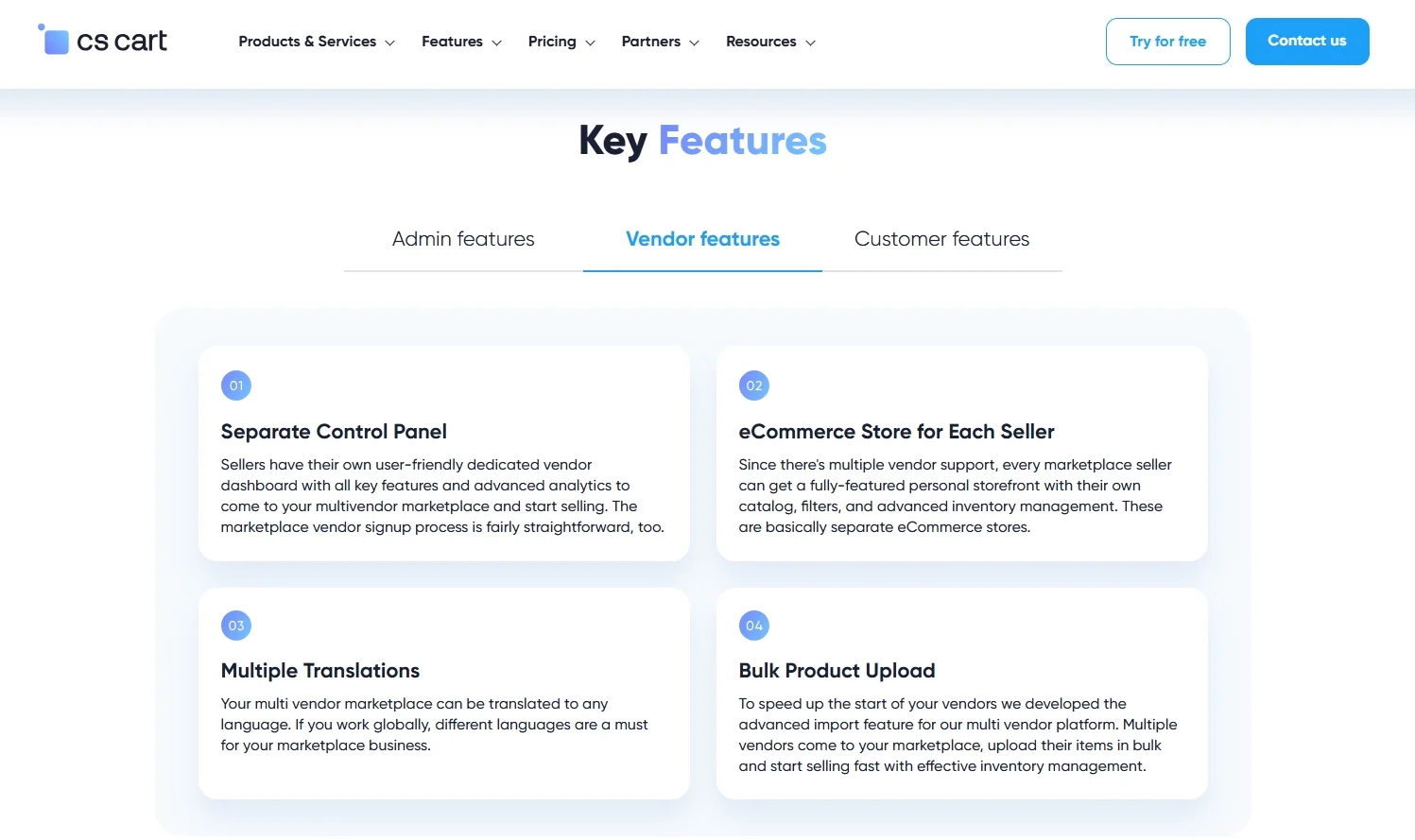
Pros and cons of using Adobe Commerce as your multi vendor eCommerce platform:
Pros | Cons |
✓ Built specifically for multi vendor marketplaces. ✓ All-in-one solution with powerful vendor tools. ✓ Advanced admin controls for commissions, approvals, and payouts. ✓ Supports digital/physical goods, mobile app, and real-time shipping. | ✗ Requires self-hosting and server setup. ✗ Customization may require a developer. ✗ User interface is functional but may feel dated compared to SaaS UI. |
In our opinion, CS-Cart is one of the best options for those who want a purpose-built multi vendor platform without piecing together multiple tools. It’s ideal for entrepreneurs and companies who prefer a complete package and are comfortable managing their own hosting environment.
What Should We Look For in A Multi Vendor eCommerce Platform?
When we choose a multi vendor eCommerce platform, we want to make sure it has the right tools to support our business. We believe that a good platform can make it easier to manage sellers, handle orders, and grow our marketplace. Below, we explain the key things we think every buyer should check before making a decision.
1. Easy-to-use vendor dashboard
We always look for a platform that gives each vendor a clear and simple dashboard. This helps them manage their products, view orders, and track payments without confusion. In our opinion, a user-friendly dashboard keeps vendors happy and saves time for everyone.
2. Strong product and order management
In our view, the platform must make it easy to add, edit, and organize products. It should also manage customer orders smoothly. If product and order tools are weak, we may face delays, mistakes, and unhappy customers.
3. Secure and simple payment options
We believe that safe and fast payments are a top priority. The platform should support trusted payment gateways like PayPal or Stripe. It should also let us split payments between the site owner and the vendors in a fair and automatic way.
4. Clear pricing and honest policies
Next, we always check the platform's pricing and rules. We prefer options that are clear about costs and don’t hide extra fees. We want to feel confident that we’re getting good value for our money.
5. Customization and growth potential
Lastly, we think it’s smart to pick a platform that we can change as our marketplace grows. If we want new features or a different design later, the platform should let us do that. This way, we won't need to start over as our needs change.
Bonus Reading: How to Build a Multi Vendor Website
Starting your own multi vendor eCommerce website might feel like a big project, but we believe it's much easier when you break it down into simple, clear steps. Whether you're creating a marketplace for physical products, digital goods, or services, having the right setup from the start will save you time and help your business grow smoothly. Let us walk you through the five key steps we recommend.
Step 1. Choose a reliable multi vendor eCommerce platform
The first and most important step is selecting a platform that can support multiple sellers while giving you the flexibility to scale your business. Since this decision will shape the rest of your journey, you’ll want a platform that is stable, easy to manage, and designed for multi vendor operations.
Popular options include Shopify (with apps like Multi Vendor Marketplace), WooCommerce (with plugins like Dokan or WCFM), and dedicated SaaS solutions like Sharetribe or CS-Cart. We suggest comparing features like vendor dashboards, payment support, customization options, and customer service before making your final choice.
Step 2. Set up website structure and vendor tools
Once the platform is chosen, it’s time to build the structure of your marketplace. In our view, a clear and simple layout makes a big difference in how users interact with your site. Organize your homepage, category pages, and product listings so they’re easy to navigate. You should also set up vendor registration and profile pages that allow sellers to sign up, manage products, and track their sales.
A clean dashboard helps vendors stay engaged and active, which is vital for your site’s long-term success.
Step 3: Configure payments and commissions
Handling money properly is crucial in any marketplace. That’s why we recommend setting up secure and automatic payment systems right from the beginning. Your platform should allow you to connect popular payment gateways like PayPal, Stripe, or bank transfer options. You’ll also need to define how commissions are split between you and your vendors.
Step 4. Add essential marketplace features
To give your marketplace a professional and user-friendly experience, it’s important to include core features that support vendors and shoppers. In our opinion, product search and filtering, reviews and ratings, order tracking, and messaging tools are all must-haves. These features help build trust and make your website feel complete.
You might also consider tools for promotions, wishlists, or even mobile optimization to improve engagement. The more value your platform offers to both buyers and sellers, the more likely it is to succeed.
Step 5. Test, launch, and promote
Before launching, we always take time to test everything thoroughly—from vendor registration to checkout and delivery processes. This step helps you catch bugs and fine-tune the user experience. Once you're confident everything works well, it's time to go live.
But launching is just the beginning. You’ll need to promote your marketplace using SEO, content marketing, social media, and email campaigns. We believe that early marketing efforts are key to building traction and attracting both sellers and buyers to your site.
By following these five steps, we’re confident you can build a multi vendor eCommerce platform that’s both functional and ready to grow. It takes planning and the right tools, but the results can be incredibly rewarding.
Multi Vendor eCommerce Platform – FAQs
Which eCommerce platform allows multiple vendors?
We’ve found that several platforms support multi vendor features, either natively or through plugins and extensions. Shopify, WooCommerce, Magento, CS-Cart, and Sharetribe are all strong options. These platforms give sellers the ability to manage their own products, orders, and profiles while allowing the store owner to oversee the entire operation. The best choice often depends on your technical experience, budget, and business goals.
Does Shopify allow multi vendor option?
Yes, Shopify allows multi vendor option but with limitations. Shopify doesn’t offer native multi vendor functionality, but we can still create a multi vendor marketplace using third-party apps like Multi Vendor Marketplace by Webkul or Shopify Marketplace Kit. These apps let vendors register, upload products, and manage their orders. However, we believe Shopify is better suited for simpler marketplaces or businesses that want a hosted solution with less technical setup.
What is a multi vendor eCommerce website?
A multi vendor eCommerce website is a type of online store where multiple independent sellers can list and sell their products under one platform. We like to compare it to popular marketplaces like Amazon, Etsy, or eBay. Each vendor gets their own dashboard to manage inventory and orders, while the platform owner controls the overall site and earns commissions. This setup is perfect for entrepreneurs who want to bring together a community of sellers in one place.
Is Magento multi vendor?
Magento is not a multi vendor platform by default, but we can turn it into one using powerful third-party extensions. Tools like Magento 2 Marketplace by Webkul or CedCommerce Marketplace let us create vendor dashboards, manage commissions, and customize the experience. We think Magento is a great choice for larger businesses or developers who want a highly flexible and scalable solution, though it usually requires more technical setup than other platforms.
Final Words
In conclusion, building a successful multi vendor eCommerce platform takes careful planning, the right tools, and a clear understanding of your goals. From choosing the best platform to setting up vendor systems and launching your site, each step plays a big role in your marketplace’s success. We believe that with the right approach, anyone can turn their marketplace idea into a thriving online business.
Last but not least, if you like this article, please don't forget to check out other blogs on our LitExtension website to get more expert tips and insights.
